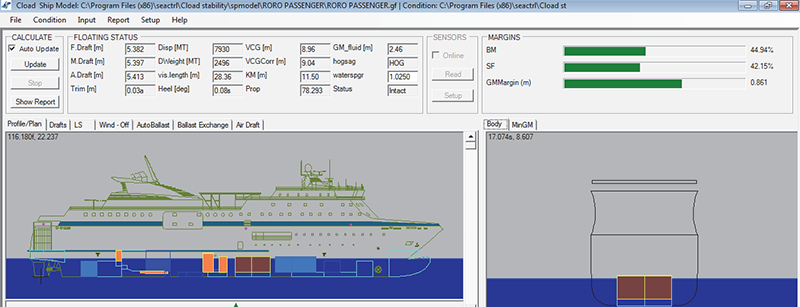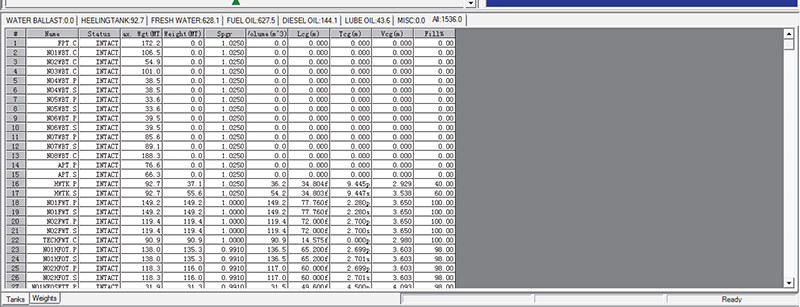Loading Software for Ro-Ro Passenger Ship


General User Interface – CLOAD for Ro-Ro Passenger Ship
Key Features
- Simulating car/container loading (user-defined car kind, weight per unit, dimension and vcg of car);
- Simulating the whole process of loading and unloading of each cart of the train from shore via ramp to the cargo train deck; Automatic generating the loading/unloading sequence of train cart;
- Real time updating the floating status, stability and longitudinal strength;
- Automatic warning and alarming of outbound of trim, heel, stability and strength;
- Automatic suggestion of the ballasting and real time control of ballasting system. Virtual planning the loading/unloading of cargo and train cart;
- Train cargo booking list and automatic synchronizing with on shore car/train/cargo booking list;
- Comply with the latest requirement of “Safety Return to Port” from MSC.1/Circ.1400 and MSC.1/Circ.1532.
Train Cart / Car Deck Loading
- Graphically load/unload/plan the train cart/car on deck. The loading/unloading/planning is intuitive, quick and accurate.
- Automatically update the floating status, stability and strength for each step of loading.
Train Ferry
- Simulate each step or whole process of loading and unloading of each cart of the train according to the plan and show the current floating status & stability.
- Adjust ballast tank load to reach target draft, trim and heel.
- Analyze the stern draft change and process the ballast amount in two pairs of trimming tanks if the draft is out of the range. Generate the loading/unloading sequence report.
- Show current table train cart information in properties form.
- In file editor form, user could create new file, or open an existing file, modify and save it.
Safety Return to Port
- Comply with the latest requirement of MSC.1/Circ.1400 and MSC.1/Circ.1532.
- Onboard computer could calculate the residual damage stability of the ship after a flooding casualty.
- Two-way communication links to shore-based support from SCS should also be available to provide the master with post-damage residual structural strength information.
- Onboard computer could be automatically received or manually input the status of flooded component after a flooding casualty, and provide an assistant proposal for ship upright.
- Estimating the effect of water accumulation on deck (WOD). (if applicable).
